Coffee is one of the world’s most beloved beverages, with over 400 billion cups consumed annually. Among these, Arabica coffee stands out as one of the two most popular coffee species alongside Robusta. With its sweet aroma, mild bitterness, and subtle depth in the aftertaste, Arabica has become the top choice for true coffee enthusiasts. In this article, we’ll explore the origins, biological characteristics, distinctive flavors, and the most popular Arabica varieties available today.
What is Arabica coffee?
Arabica coffee, with the scientific name Coffea Arabica, is primarily cultivated in mountainous regions at altitudes ranging from 1,000 to 1,500 meters. This coffee variety offers incredibly diverse flavors, from sweet to bright acidity and refreshing notes, though most retain a characteristically rich aftertaste. Arabica coffee beans contain very low caffeine content, only 1-2% caffeine, but still sufficient to help you stay alert each morning.
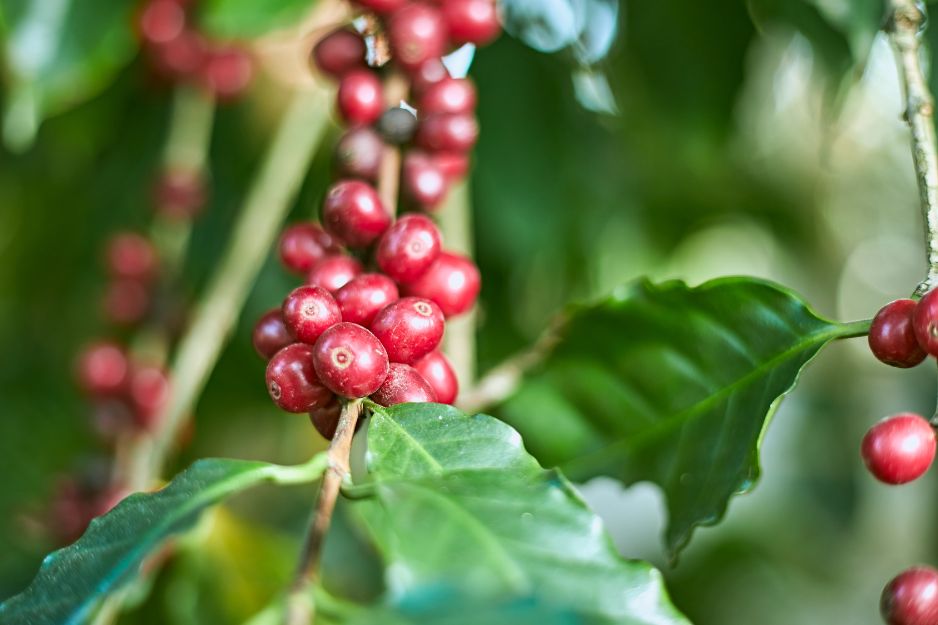
Arabica is the world’s most popular coffee type, accounting for 60% of global production (with Robusta ranking second), as it’s generally considered more flavorful than Robusta and therefore more widely preferred. Arabica prices are typically higher due to demanding cultivation conditions, complex processing requirements, and lower yields compared to other varieties.
Arabica coffee is often used in sophisticated drinks such as pour-over, espresso, latte or cold brew thanks to its mild aroma, light acidity and sweet aftertaste. With its low bitterness and rich fruity flavor, Arabica is the ideal choice for those who love smooth and balanced coffee.
Origins of Arabica coffee
According to numerous historical records, wild coffee plants (Coffea arabica) were discovered around 850 AD and are classified as native flora of Ethiopia (East Africa). However, recent research by Dr. Sarada Krishnan and colleagues suggests that this coffee species grew wild in South Sudan without human cultivation or care.
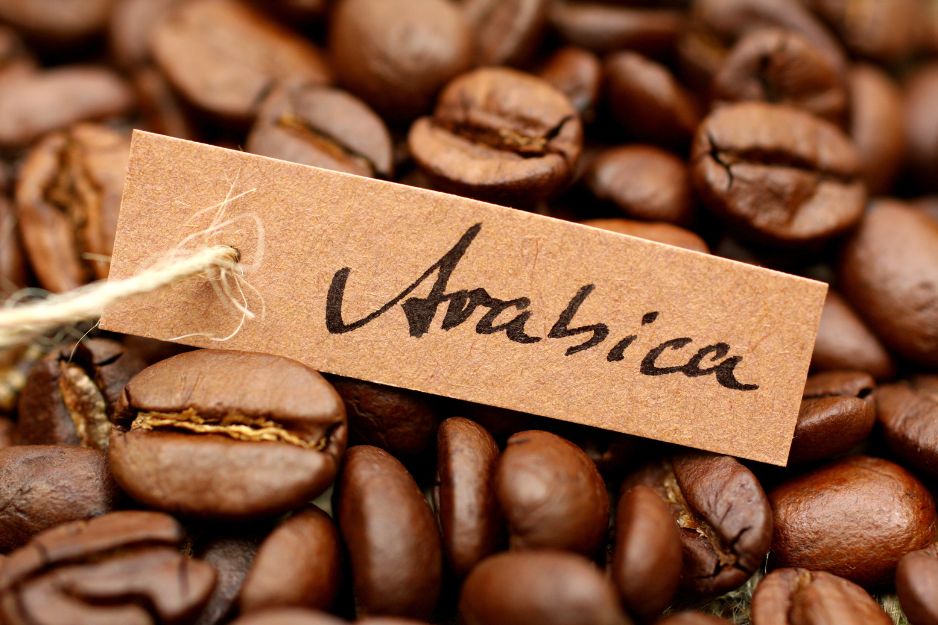
From this perspective, the highland forests of Ethiopia and South Sudan can be considered the cradle of Arabica coffee. According to information in “The Craft and Science of Coffee” (2016), current Arabica varieties originated from the pristine forests of the famous Rift Valley. Evidence includes some wild Arabica trees that continue to thrive in these regions today. Most current Arabica coffee plant populations are typically hybrid varieties, with very few remaining indigenous C. arabica species.
In the 8th century, some Arabica coffee beans began being transported from Ethiopia to Yemen, where Arabs cultivated them for many centuries. For nearly 100 years, this was the only country supplying this coffee variety, which later spread to countries like India, Ceylon, Java, Indonesia, Vietnam, and others.
Distribution of Arabica coffee plants
Arabica coffee thrives in subtropical climates at altitudes ranging from 600 to 2,200 meters above sea level. Arabica is primarily grown in regions with rich volcanic soil, abundant rainfall, and clearly defined dry and wet seasons. Some of the world’s most renowned Arabica coffee-growing regions include:
- Ethiopia: Known as the birthplace of coffee, Ethiopia is home to numerous diverse Arabica coffee varieties, including the famous Ethiopian heirloom coffee.
- Colombia: Colombia’s diverse climate and mountainous terrain contribute to producing high-quality Arabica coffee beans, renowned for their mild acidity and rich flavor profile.
- Brazil: As the world’s largest Arabica coffee producer, Brazil’s vast coffee plantations yield aromatic, full-bodied beans highly valued for their versatility in creating specialty products.
- Kenya: Kenya’s highlands and acidic soils produce Arabica coffee beans famous for their intense acidity, fruity aroma, and diverse flavor profiles.
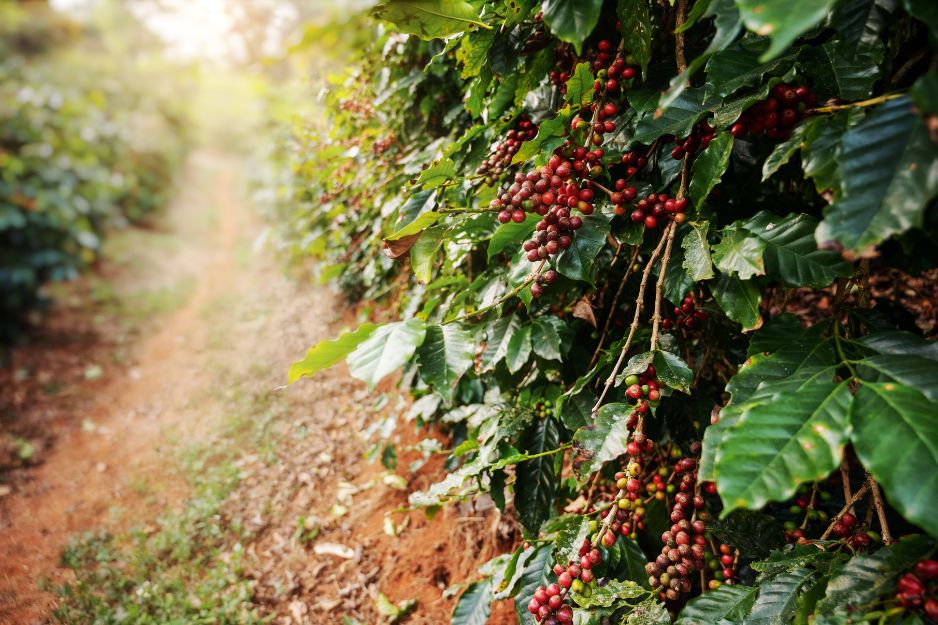
What does Arabica coffee taste like?
According to expert assessments, Arabica coffee is characterized by light, bright acidity, mild bitterness harmoniously blended with a uniquely distinctive sweetness. This coffee variety also offers diverse flavors, including floral notes, nutty flavors, chocolate, fruity aromas, citrus notes, and more, providing remarkably different taste experiences.
Arabica beans have lower acidity levels than other coffee varieties. Consequently, the flavor is often described as complex and refined with many distinct flavor notes depending on when it’s enjoyed.

Additionally, Arabica coffee bean flavors can be influenced by the climate and soil conditions of each region. For instance, Central and South American coffee is characterized by rich chocolate flavors, while African-grown Arabica is famous for its floral and refreshing fruity aromas.
Overall, Arabica is the ideal choice for coffee enthusiasts who prefer sweet, mild coffee flavors that can be enjoyed in their pure form or paired with milk and sugar—both are delicious.
How much does Arabica coffee cost?
Arabica coffee prices on the international market are typically 30% to 80% higher than Robusta coffee, depending on timing and quality. The main reasons include Arabica’s more refined flavor profile, lower caffeine content, and stricter cultivation requirements, leading to higher production costs.
Specifically, according to the ICE (Intercontinental Exchange), in recent years, green bean Arabica coffee prices typically range from $2.5–4.5 USD/kg, while green bean Robusta prices are only around $1.7–2.8 USD/kg.
In the Vietnamese market, dried Arabica beans are purchased at approximately 90,000–130,000 VND/kg, while dried Robusta beans typically range from only 60,000–80,000 VND/kg.
For finished roasted and ground coffee, high-quality Arabica lines (single origin, specialty, organic, etc.) can retail for 250,000–600,000 VND/kg, nearly double the price of regular Robusta.
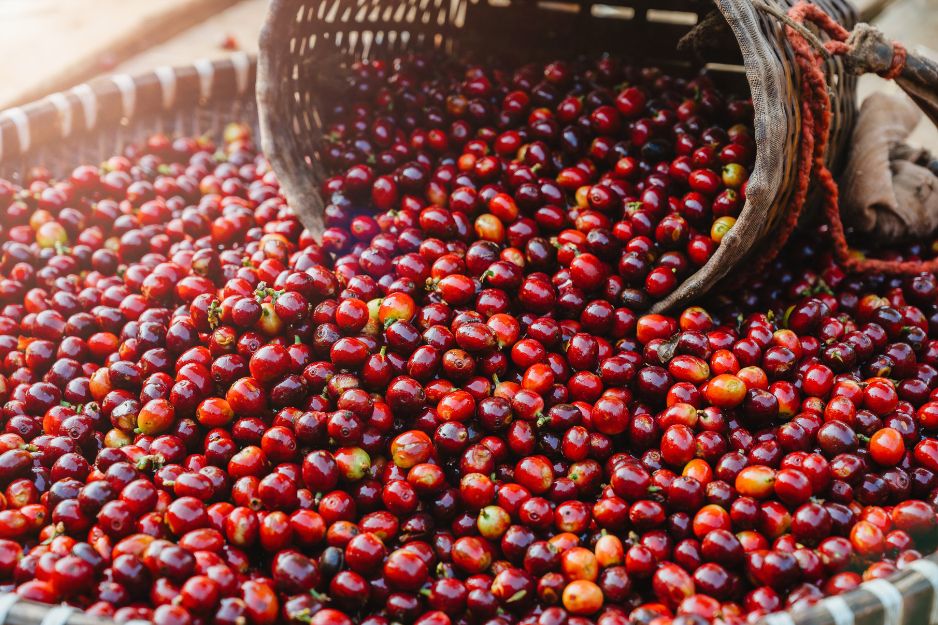
Arabica coffee prices also fluctuate significantly based on harvest seasons, weather conditions (especially in Brazil), exchange rates, and global consumption demand. Consumers need to closely monitor market developments if they want to invest in or trade Arabica coffee effectively.
Read more: The Difference Between Arabica and Robusta Coffee Beans
Why is Arabica coffee priced higher than Robusta?
- Flavor and Quality: Compared to Robusta coffee beans with their strong bitter flavor, less aroma, and rougher texture, Arabica coffee beans offer refined, gentle flavors with captivating aromas. Therefore, consumers typically prefer Arabica more due to its high quality and rich flavor profile.
- Caffeine Content: Robusta contains more caffeine than Arabica. While caffeine is important for providing energy to the body, many people prefer Arabica because its moderate caffeine content doesn’t cause irritation.
- Growing Conditions and Costs: Arabica typically grows at higher altitudes and requires more demanding weather conditions compared to Robusta coffee. Therefore, Arabica usually commands higher market prices.
Arabica coffee processing methods
The processing methods used significantly influence the flavor and characteristics of Arabica coffee. Popular Arabica coffee processing methods include:
- Wet Processing: In this method, ripe coffee cherries are pulped to remove the outer skin, fermented in water to remove mucilage, then dried. Washed Arabica coffee typically has citrusy acidity and clear flavors.
- Dry Processing: In the dry processing method, ripe coffee cherries are dried whole, allowing beans to absorb sugars and develop fruity, wine-like flavors. Dry-processed Arabica coffee is characterized by sweetness, richness, and distinct fruity aromas.
- Semi-Wet Processing: In this method, coffee cherries are pulped after harvesting. After pulping, beans still covered with mucilage are sun-dried on specialized drying beds. Semi-wet processed Arabica coffee has balanced flavors, with moderate acidity and rich fruity and floral sweetness.
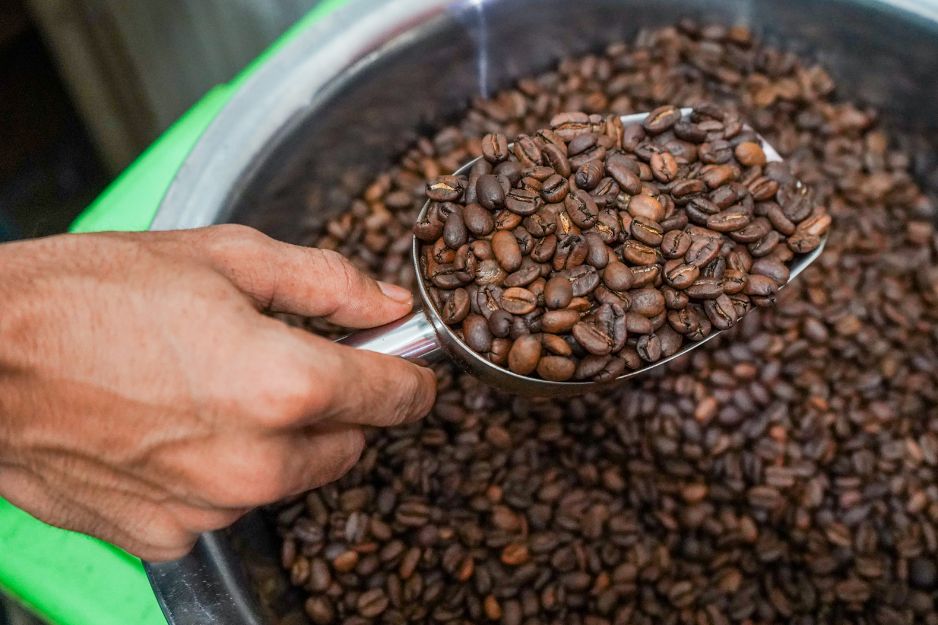
Popular Arabica coffee varieties
Commercially, there are four popular pure Arabica coffee varieties and one relatively pure Arabica variety. The four pure varieties are Caturra, Bourbon, Mocha, and Typica. The relatively pure variety is Catimor.
1. Typica
Typica is the most famous coffee variety with the most significant genetic importance in the Arabica coffee family, serving as the ancestor of many other coffee varieties. Originating from Ethiopia, Typica was the first coffee plant taken from its homeland. In the 15th century, this coffee variety was brought to Yemen, then to India and Indonesia. From there, it was transferred to the Botanical Garden in Amsterdam, then to French Guiana, Brazil, and other regions of the Americas, including Martinique, Jamaica, Cuba, Costa Rica, and El Salvador.
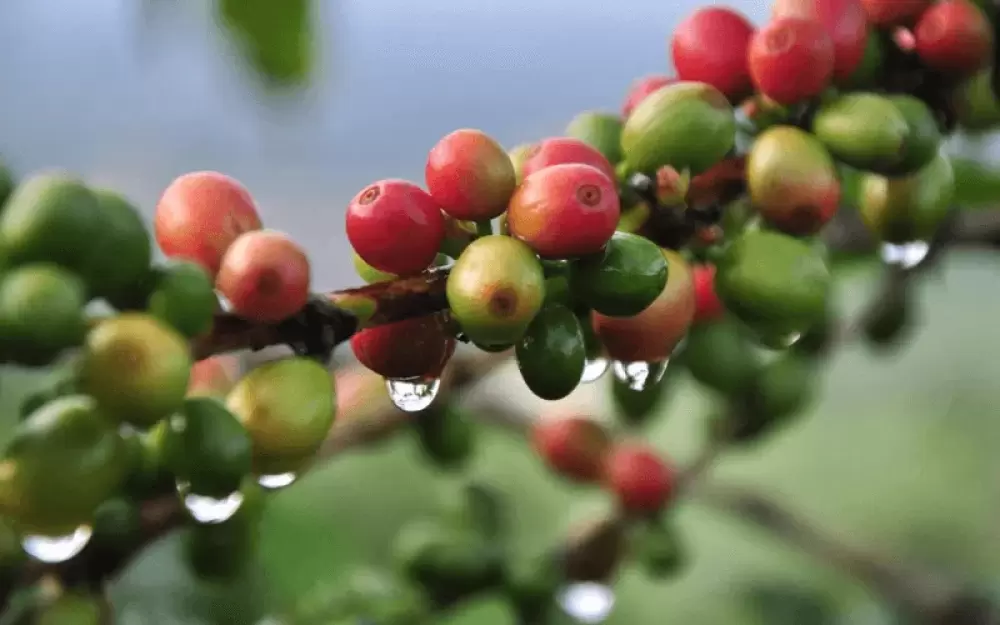
Typica coffee plants are tall with bronze-tipped leaves and large cherries. They’re renowned for high coffee quality and distinctive flavors. However, this variety is highly susceptible to diseases like coffee leaf rust, pests, and has low yields, making it less suitable for large-scale production. Despite facing many challenges, Typica remains the foundation of Arabica coffee history and genetics.
2. Bourbon
Bourbon is a famous Arabica coffee variety named after Bourbon Island (now Réunion), where it was cultivated from the early 18th to mid-19th centuries. Later, this variety spread to Brazil and other regions in South and Central America.
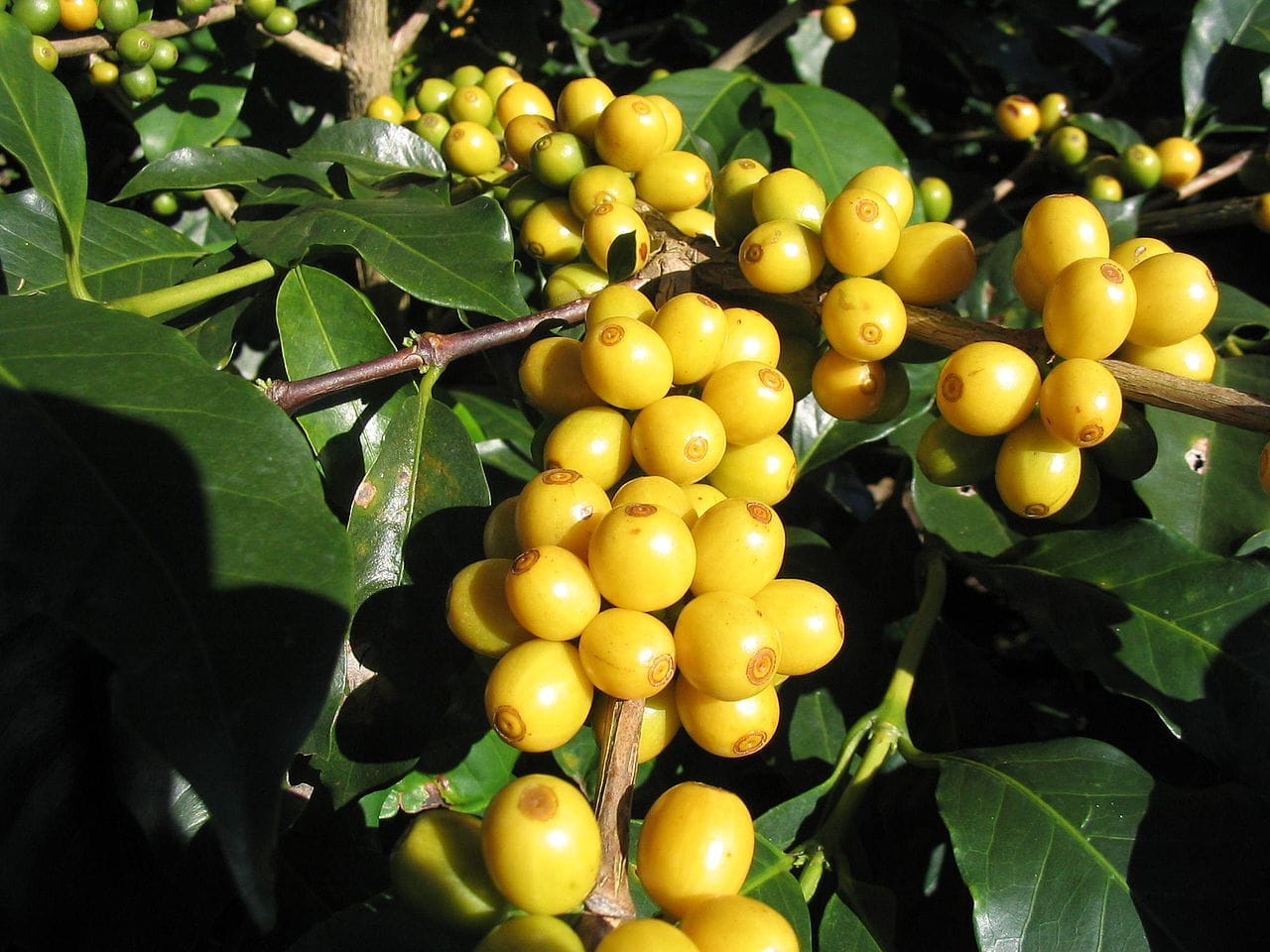
Bourbon variety has moderately large beans with superior flavor potential compared to many other varieties. However, like Typica, it has low disease resistance. Although Bourbon yields are about 20% higher than Typica, they’re still lower than many other coffee varieties.
3. Timor Hybrid
Timor Hybrid, also known as Hybrido de Timor (HdT) or Tim Tim, is a natural hybrid between Arabica and Robusta (or Canephora). This variety combines characteristics of both species, particularly leaf rust resistance from Robusta.
Timor Hybrid is an important variety in developing disease-resistant coffee plants. Notably, Arabica is believed to have evolved from Eugenioides and Canephora, making Timor Hybrid a backcross result that nature has developed over more than 100,000 years.
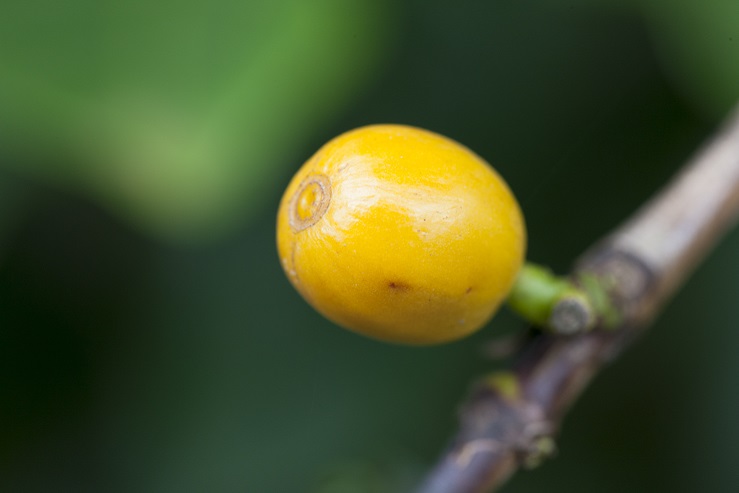
4. Catimor
Catimor is a coffee variety bred from two varieties: Caturra and Timor (Timor itself is a cross between Robusta and Arabica lines), originating from Portugal. This is a small, resilient coffee plant that can be planted densely and produces fruit quickly. The plant’s leaves are typically reddish-brown when young.
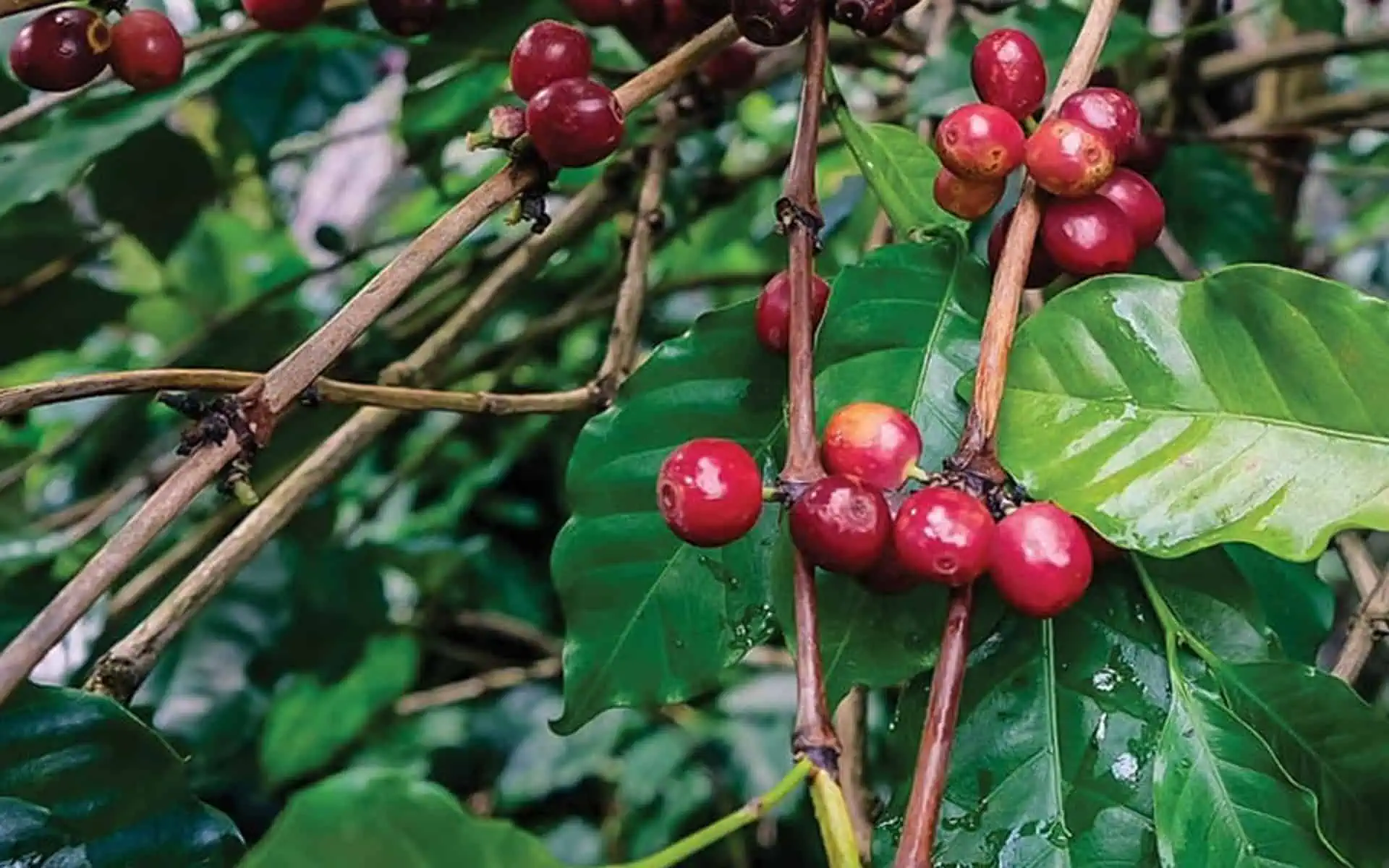
Catimor requires farmers to monitor and fertilize carefully, making cultivation quite challenging. The plant’s productive lifespan is short, only providing good yields for the first few years. Catimor’s major disadvantage is poor coffee quality if grown in unsuitable locations, especially in high mountain areas. Catimor is commonly grown in countries like Indonesia, Vietnam, Mexico, and Peru.
5. Caturra
Caturra is bred from Arabica coffee varieties—a variant of Bourbon (pure Arabica) crossed with Mundo Novo (a hybrid between two pure Arabica lines: Bourbon and Typica).
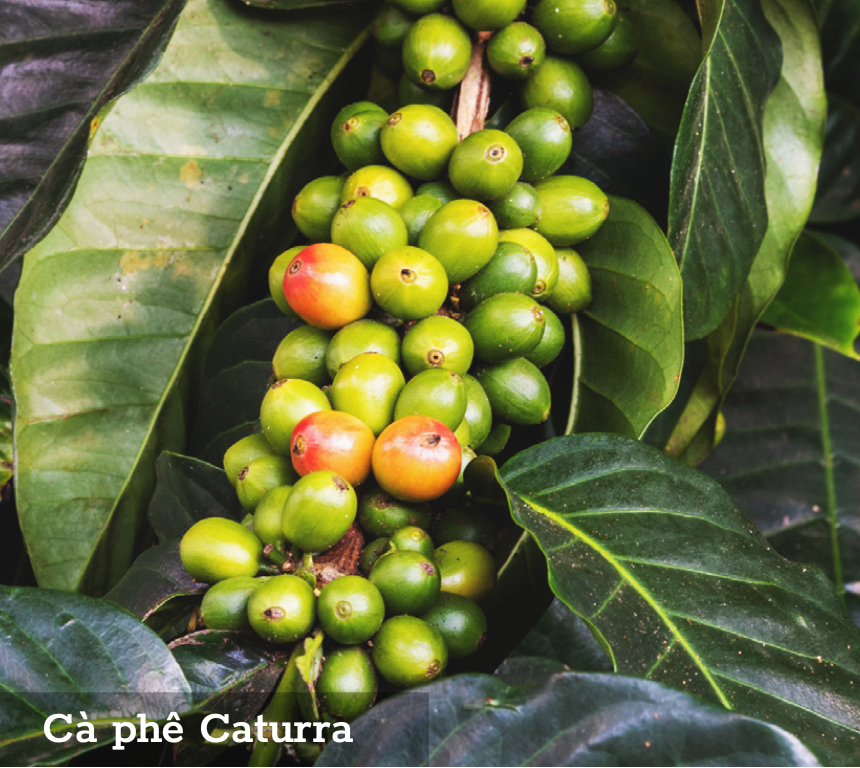
This Arabica coffee variety has a distinctive bright yellow color that’s very eye-catching and difficult to confuse with other coffee types. Caturra is bred from various coffee varieties and was imported from Cuba in the 1980s. This coffee variety is characterized by round, plump beans similar to Catimor coffee beans.
Best Arabica coffee growing regions in Vietnam
Although Vietnam’s climate and soil characteristics aren’t ideal for Arabica growth, we still have four renowned Arabica coffee lines: Bourbon (Mocha), Typica, Caturra, and Catimor.
The best Arabica coffee growing regions in Vietnam include Lam Dong, Quang Tri, Dien Bien, and Son La. Particularly, the Cau Dat area of Da Lat, Lam Dong, is naturally favored, so Cau Dat Arabica has very high quality and is dubbed the “Queen of Vietnamese Coffee.”
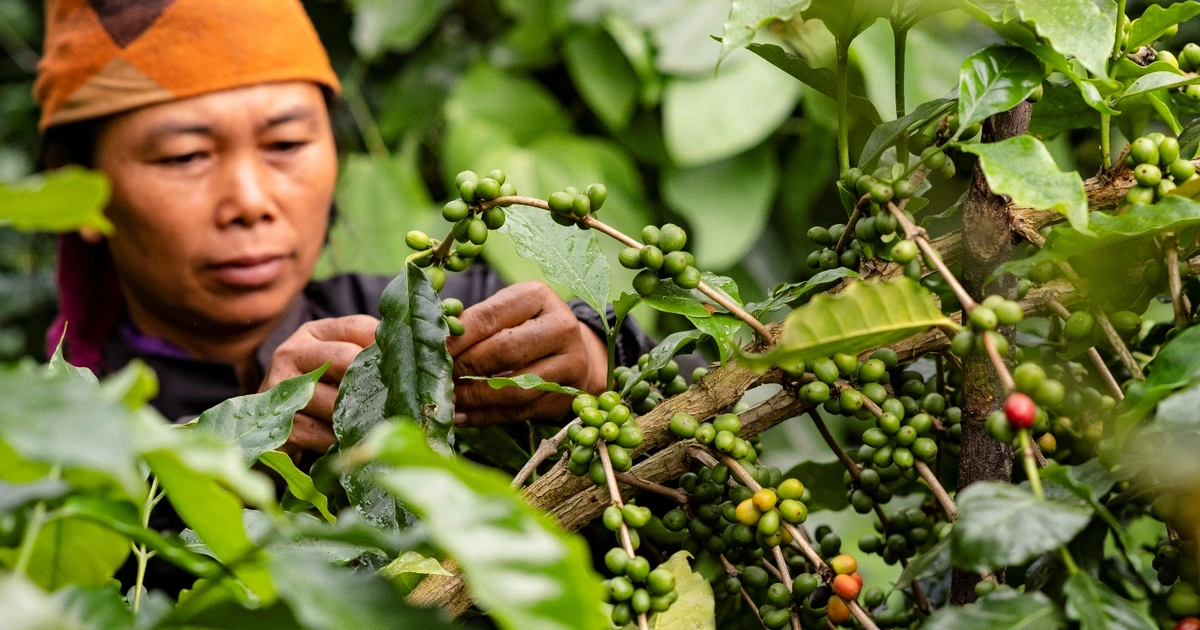
Additionally, the Northwest region, mainly Son La and Dien Bien provinces, has suitable soil and climate for growing mostly Arabica coffee. Arabica coffee plants here grow well and produce high quality. Son La is Vietnam’s second-largest Arabica coffee-growing province after Lam Dong province. Huong Hoa Arabica coffee in Quang Tri is also a region that grows many Arabica coffee beans. Khe Sanh – Quang Tri was chosen by the Vietnam Coffee and Cocoa Association as the largest Arabica coffee growing and production center in Central Vietnam.
What are the benefits of Arabica coffee
Health benefits
Arabica coffee contains antioxidants like Vitamin E. Additionally, it contains some B vitamins, magnesium, and potassium.
Drinking coffee and using coffee grounds helps stimulate blood flow, reducing the appearance of cellulite, varicose veins, stretch marks, age spots, eczema, and psoriasis. It also works as a natural detoxifier by removing dead skin, treating acne, eliminating blackheads, and other skin imperfections.
Furthermore, Arabica coffee also helps with weight loss and prevents dangerous diseases.
Economic benefits
From an economic perspective, Arabica coffee is the most valuable coffee type in the global market, accounting for approximately 60–70% of total global coffee production. With characteristics favored in the mid-to-high-end segments, Arabica coffee generates billions of USD in export value annually, becoming a pillar in the global coffee industry.
- Brazil, the world’s largest Arabica exporter, recorded revenue of over $5.6 billion from coffee exports in 2023, with approximately 70% being Arabica. Major markets include the United States, Germany, and Italy.
- Colombia, a country that grows nearly 100% Arabica, earned nearly $3.6 billion from coffee exports in 2023. Colombian Arabica is highly valued for its distinctive flavor and quality consistency, helping elevate the country’s value on the global specialty coffee map.
- Ethiopia, the homeland of Arabica variety, achieved coffee export value of approximately $1.4 billion in 2023, with over 95% being Arabica. The coffee industry accounts for 25% of the country’s total commodity export revenue, playing a crucial role in the economy.
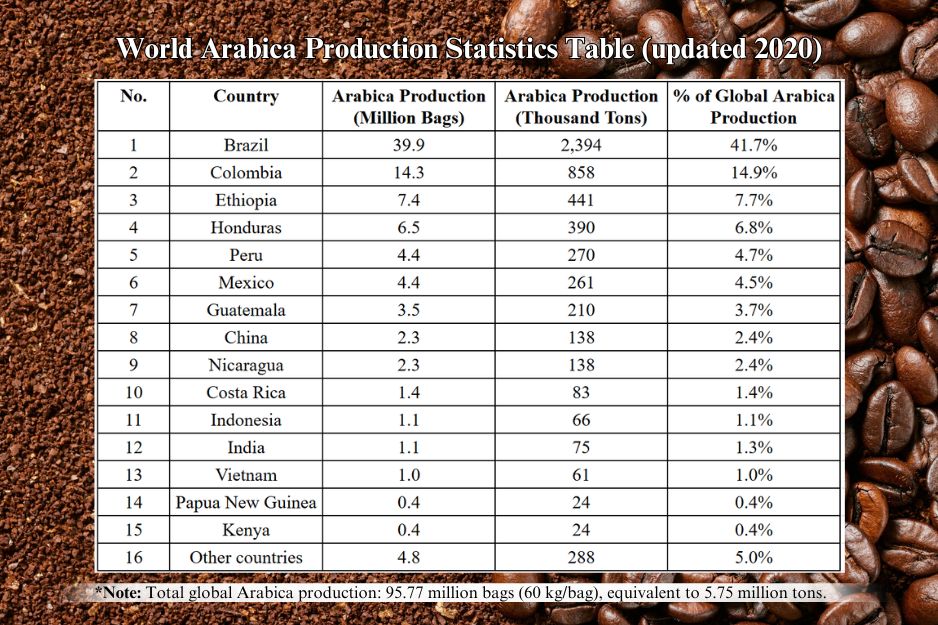
This article has helped you better understand Arabica coffee—from its origins and characteristics to the most popular varieties available today. We hope this information will help you choose the right coffee type for your taste preferences or business purposes. We wish you always have complete and inspiring coffee experiences. And if you’re looking for a high-quality Arabica coffee brand with fresh roasting and authentic flavor, don’t miss Hello 5 Coffee’s product lines—where we honor the true value of Vietnamese coffee through each carefully selected Arabica bean.
